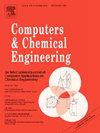Interpretation of high-dimensional regression coefficients by comparison with linearized compressing features
IF 3.9
2区 工程技术
Q2 COMPUTER SCIENCE, INTERDISCIPLINARY APPLICATIONS
引用次数: 0
Abstract
Linear regression is often deemed inherently interpretable; however, challenges arise for high-dimensional data. We focus on further understanding how linear regression approximates nonlinear responses from high-dimensional functional data. We develop a linearization method to derive feature coefficients, which we compare with the closest regression coefficients of the path of regression solutions. We showcase the methods on battery data case studies where a single nonlinear compressing feature, , is used to construct a synthetic response, . This unifying view of linear regression and compressing features for high-dimensional functional data helps to understand (1) how regression coefficients are shaped in the highly regularized domain, (2) how regression coefficients relate to linearized feature coefficients, and (3) how the shape of regression coefficients changes as a function of regularization to approximate nonlinear responses by exploiting local structures.
通过与线性化压缩特征的比较来解释高维回归系数
线性回归通常被认为是内在可解释的;然而,高维数据面临挑战。我们的重点是进一步了解线性回归如何从高维函数数据近似非线性响应。我们开发了一种线性化方法来推导特征系数,并将其与回归解路径的最接近回归系数进行比较。我们展示了电池数据案例研究的方法,其中使用单个非线性压缩特征g:Rp→R来构建综合响应y∈R。这种对高维函数数据的线性回归和压缩特征的统一观点有助于理解(1)回归系数如何在高度正则化的域中形成,(2)回归系数如何与线性化的特征系数相关,以及(3)回归系数的形状如何作为正则化的函数变化,通过利用局部结构来近似非线性响应。
本文章由计算机程序翻译,如有差异,请以英文原文为准。
求助全文
约1分钟内获得全文
求助全文
来源期刊

Computers & Chemical Engineering
工程技术-工程:化工
CiteScore
8.70
自引率
14.00%
发文量
374
审稿时长
70 days
期刊介绍:
Computers & Chemical Engineering is primarily a journal of record for new developments in the application of computing and systems technology to chemical engineering problems.
 求助内容:
求助内容: 应助结果提醒方式:
应助结果提醒方式:


